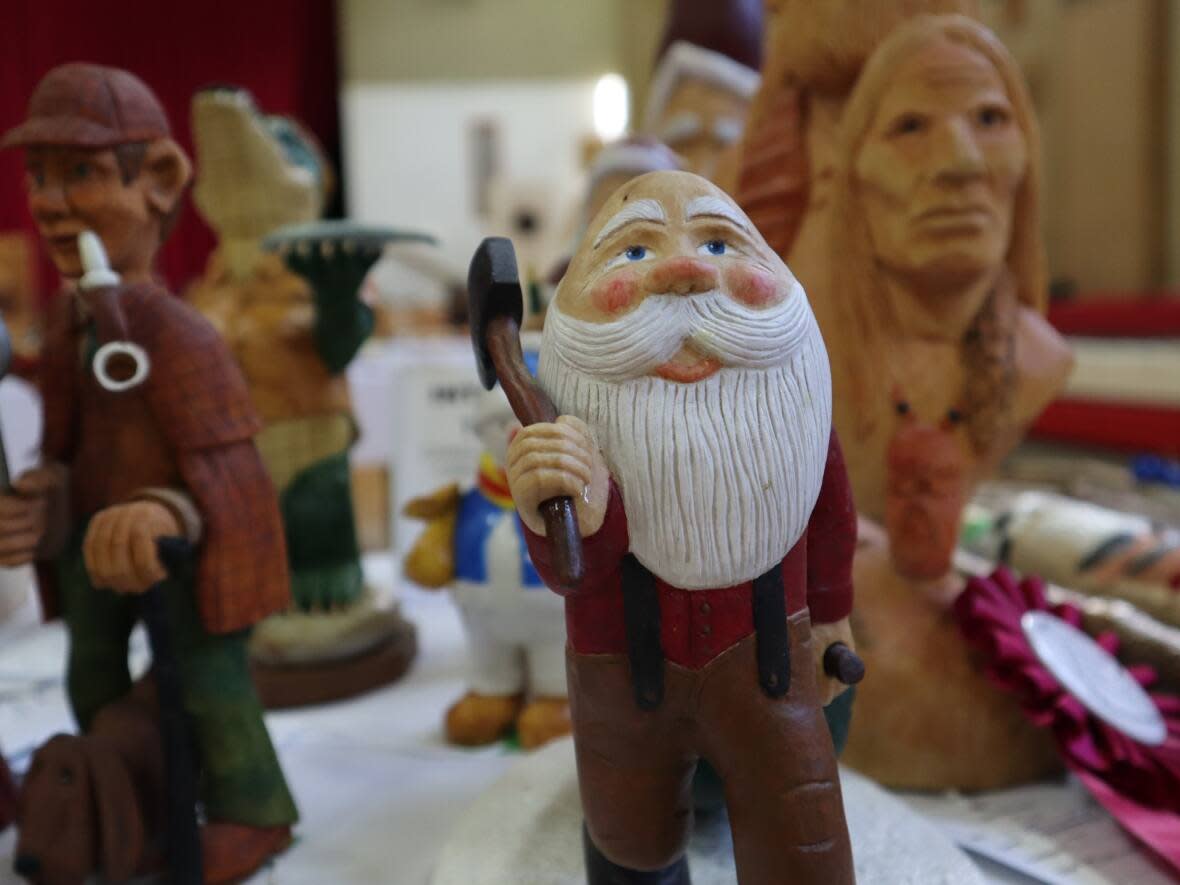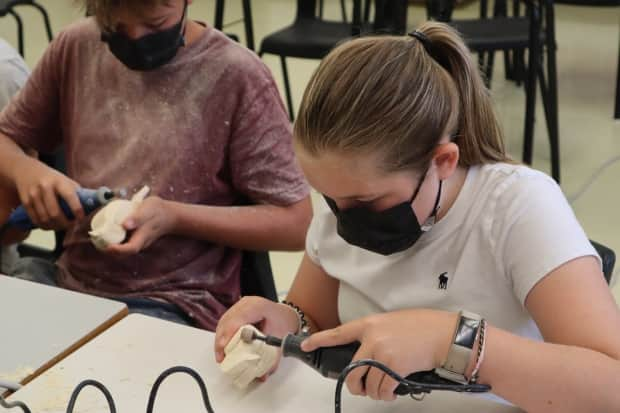Woodcarving competition returns after COVID absence

After a two-year break, wood carvers got a chance to show off their artistic talent in Saint Andrews.
The 15th annual New Brunswick Wood Carving Competition welcomed carvers from around the province this weekend, and from as far away as British Columbia and Alabama.
Like most other events, the competition took a two-year break because of the COVID-19 pandemic.
Gord Willett, an organizer with the New Brunswick Woodcarving Association, said the competition is likely the second largest one in Canada.
"This year, we had close to 400 entries, 400 carvings, which is much more than we've ever had before," said Willett.

"We've had carvers here that compete at the world level and carvings here that have been entered at the world level. So some pretty fantastic stuff."
While there were plenty of entries, Willett was a little concerned about the limited number of entries in the younger age categories.
He said an important aspect of the competition is attracting youth to keep the art form alive.
He can remember when he started out as a youngster.
"I started as a kid on my front step, whittling a bar of Irish soap out with a paring knife," said Willett.

Katie Duchesneau's father started carving as a retirement activity, and it looks like carving has been passed down to her daughter, Jenna.
"He told us about the little lesson going on this morning, so we came down to check it out," said Duchesneau.
"My daughter's been wanting to learn to carve, and he's promised she would, but hasn't done it yet."
Willett said part of the challenge with getting kids into carving is having them visualize how a block of wood can be turned into a work of art.
But he's found an interesting way of explaining it.
"What if you took an ice cube tray and you put a favourite toy … and you bury that in the water and then froze it," said Willett.
"It's still there. You can't see it. It's buried in ice, much like these birds are buried in a block of wood."


